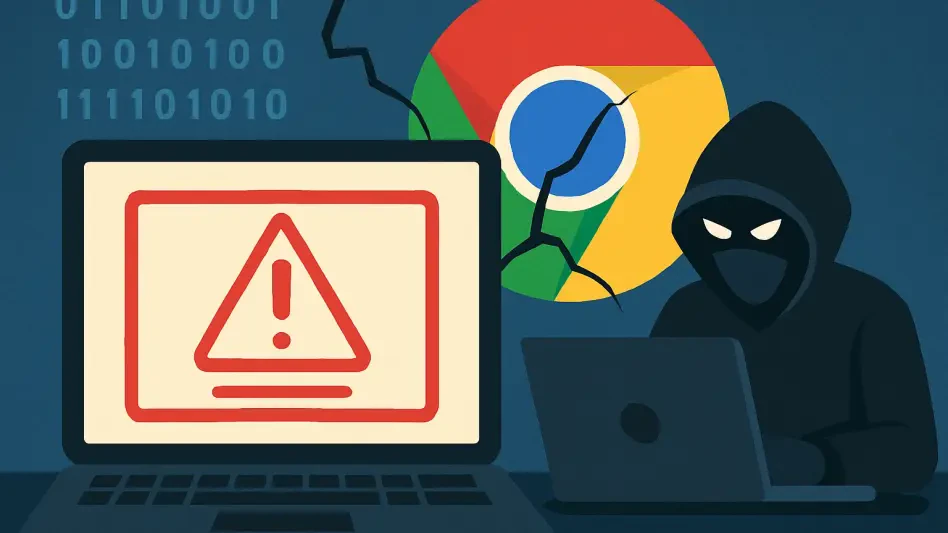In an era where mobile applications underpin nearly every facet of business operations and personal interactions, ensuring their security against sophisticated cyber threats has become an absolute necessity for organizations across all sectors. Mobile application penetration testing, often abbreviated as “pentesting,” is a proactive cybersecurity practice where ethical hackers simulate real-world attacks to expose vulnerabilities in apps before malicious entities can exploit them. With the digital landscape continuously shifting and threats becoming more advanced, aligning with leading pentesting firms is no longer optional but essential for safeguarding sensitive data, protecting digital assets, and preserving customer trust. The financial and reputational fallout from a single breach can be catastrophic, often costing millions and eroding hard-earned credibility overnight. This comprehensive exploration delves into the premier mobile pentesting companies shaping security standards in the current year, assessing their expertise, innovative approaches, and distinctive service offerings. Whether managing a fledgling startup or steering a multinational corporation, identifying the right security partner can significantly impact an organization’s resilience against cyber risks. By understanding the strengths and specializations of industry leaders, businesses can make informed decisions to fortify their mobile environments against ever-evolving dangers.
The Critical Role of Mobile Pentesting Today
Mobile pentesting has emerged as a cornerstone of cybersecurity strategy, given the escalating complexity of threats targeting mobile platforms in today’s digital ecosystem. Attackers increasingly focus on weaknesses such as insecure data storage, flawed API integrations, and platform-specific exploits affecting iOS and Android systems. Beyond mere technical evaluation, pentesting serves as a vital shield for companies striving to outmaneuver cybercriminals who relentlessly seek entry points into sensitive systems. The significance of this practice is amplified as mobile usage continues to dominate global digital engagement, making apps a prime target for malicious activity. By engaging with specialized firms, businesses gain critical insights into potential risks, enabling them to address issues before they escalate into full-blown breaches that could compromise user trust and operational integrity. This proactive approach not only mitigates financial losses but also ensures continuity in an environment where downtime or data leaks can have far-reaching consequences.
Moreover, the value of mobile pentesting extends to maintaining regulatory compliance and upholding industry standards, which are non-negotiable for many sectors. Companies operating in fields like finance, healthcare, and e-commerce face stringent requirements under frameworks such as GDPR, PCI-DSS, and HIPAA. Top pentesting providers play an indispensable role by aligning their assessments with these regulations, helping clients avoid penalties and legal repercussions while fostering a culture of security. Their ability to simulate real-world attack scenarios provides a realistic gauge of an app’s defenses, offering actionable recommendations that strengthen overall posture. As the stakes of mobile security continue to rise, partnering with firms that prioritize both technical depth and compliance alignment becomes a strategic imperative for any organization aiming to thrive in a digital-first landscape.
Emerging Trends in Mobile Pentesting Practices
A defining trend in the mobile pentesting arena is the widespread adoption of hybrid testing methodologies that combine the efficiency of automated tools with the nuanced insight of manual expertise. Automated systems excel at rapidly scanning for common vulnerabilities, covering vast areas of code in minimal time, which is invaluable for organizations with frequent release cycles. However, they often fall short in detecting intricate issues like business logic flaws or context-specific risks that require human intuition and creativity to uncover. Leading firms have recognized this limitation and emphasize a balanced approach, leveraging automation for breadth and manual testing for depth to ensure comprehensive coverage. This synergy allows for a more robust evaluation of mobile applications, addressing both surface-level and deeply embedded vulnerabilities that could otherwise go unnoticed until exploited by adversaries.
Another notable shift is the integration of pentesting solutions into modern DevSecOps frameworks, reflecting the industry’s move toward embedding security within the software development lifecycle. As organizations increasingly adopt agile methodologies and continuous integration/continuous deployment (CI/CD) pipelines, the need for security tools that align with rapid development paces has become evident. Top-tier firms are responding by offering platforms and services that enable early vulnerability detection, often referred to as the “shift left” approach, minimizing the cost and complexity of remediation in later stages. This trend underscores a broader cultural shift toward proactive security, where testing is not an afterthought but a core component of development processes, ensuring that mobile apps are fortified from inception through deployment.
Additionally, the incorporation of artificial intelligence (AI) and machine learning (ML) into pentesting practices marks a forward-looking trend that enhances efficiency and foresight. These technologies enable faster analysis of vast datasets, identifying patterns and predicting potential weak spots before they are exploited. However, there is a consensus among industry leaders that AI and ML should augment rather than replace human expertise, as complex vulnerabilities often demand a nuanced understanding that only experienced testers can provide. This blend of cutting-edge technology with traditional skills illustrates the dynamic evolution of mobile pentesting, where innovation and human judgment work in tandem to address the sophisticated threats facing mobile ecosystems today.
Distinguishing Features of Elite Pentesting Firms
One of the primary attributes that elevate top mobile pentesting firms above the competition is their dedication to delivering actionable and detailed reporting. Identifying vulnerabilities is only part of the equation; the best companies go further by prioritizing risks based on severity and potential impact, accompanied by clear, step-by-step guidance for remediation. This approach empowers development teams to address issues efficiently, reducing downtime and minimizing exposure to threats. Such reporting transforms raw data into strategic insights, enabling organizations to focus resources on the most pressing concerns while maintaining operational momentum. Firms that excel in this area bridge the gap between technical findings and practical solutions, ensuring that even non-security experts within a company can grasp and act on the recommendations provided.
Equally important is the emphasis on compliance with globally recognized standards and regulatory frameworks, a hallmark of industry-leading providers. Frameworks like the OWASP Mobile Top 10, GDPR, and PCI-DSS are critical benchmarks for organizations, particularly those in regulated sectors such as banking and healthcare, where non-compliance can result in severe penalties. Elite firms integrate these standards into their testing methodologies, offering assurance that mobile applications not only resist cyber threats but also meet legal and operational requirements. This dual focus on security and compliance provides clients with a competitive edge, reinforcing trust with stakeholders and customers while safeguarding against both technical and regulatory risks in an increasingly scrutinized digital environment.
Diversity in Service Models and Client Needs
The spectrum of service models offered by top pentesting firms reflects the varied demands of their clientele, ranging from startups with limited budgets to global enterprises with intricate security needs. Some companies prioritize scalable, automated platforms that facilitate continuous testing, ideal for organizations with frequent updates or large app portfolios requiring consistent monitoring. These solutions often appeal to teams seeking speed and efficiency without the need for extensive in-house expertise. On the other hand, firms specializing in bespoke, expert-led assessments cater to businesses with custom-built applications or unique security challenges, providing in-depth analysis that automated tools alone cannot achieve. This diversity ensures that every organization, regardless of size or complexity, can access tailored pentesting services that align with their specific operational context.
Furthermore, the adaptability of service offerings to different client priorities underscores the flexibility of leading providers in addressing a wide array of scenarios. For large enterprises, integrated platforms that support full lifecycle security—from development to deployment—are often the preferred choice, as they streamline processes within complex DevSecOps environments. Conversely, smaller teams or emerging businesses may gravitate toward cost-effective, user-friendly tools that deliver quick results without overwhelming resources. This range of options highlights the importance of understanding organizational goals and constraints when selecting a pentesting partner. By offering varied approaches, top firms ensure that whether the need is for rapid scans or meticulous evaluations, there is a solution to match every requirement in the mobile security landscape.
Specialization and Expertise in Mobile Security
A distinguishing factor among premier pentesting firms is their deep specialization in mobile-specific security challenges, setting them apart from providers focused on broader application or network security. Mobile apps present unique risks, including platform-specific vulnerabilities on iOS and Android, insecure data handling, and API-related exposures that differ significantly from web or desktop environments. Leading companies demonstrate proficiency in navigating these nuances, tailoring their testing strategies to address the distinct architectures and threat vectors inherent to mobile ecosystems. This focused expertise ensures that vulnerabilities specific to mobile contexts are not overlooked, providing clients with confidence that their apps are rigorously evaluated against relevant risks prevalent in the current digital sphere.
Beyond technical mastery, the ability to customize services based on client priorities—whether emphasizing thoroughness, speed of delivery, or budget considerations—further defines the top players in this field. Elite firms exhibit flexibility in adapting their methodologies to suit varying needs, ensuring that both small businesses seeking affordable solutions and large corporations requiring exhaustive assessments receive equal attention to detail. This client-centric approach, combined with specialized knowledge of mobile threats, positions these companies as trusted partners in safeguarding applications. Their capacity to balance technical precision with practical considerations enables organizations of all scales to enhance their mobile security posture effectively, addressing immediate concerns while building resilience against future threats.
Navigating the Future of Mobile Security
Reflecting on the landscape of mobile pentesting, it becomes clear that the leading firms have set a high standard by blending innovation with proven practices to tackle an ever-shifting array of cyber threats. Their commitment to hybrid testing, actionable insights, and regulatory alignment has provided businesses with robust tools to protect their mobile applications. The diversity in service models, from automated platforms to expert-driven consultancies, has ensured that companies of varying sizes and needs find suitable partners to fortify their digital defenses.
Looking ahead, the focus should shift toward continuous adaptation and investment in emerging technologies like AI, while maintaining the critical human element in testing processes. Businesses are encouraged to evaluate their specific security requirements—be it scalability for rapid growth or in-depth analysis for bespoke apps—and align with firms that best match those priorities. Staying proactive by integrating pentesting into development cycles from the outset can prevent vulnerabilities from reaching production stages. As the mobile threat environment evolves, fostering ongoing collaboration with top-tier providers will be essential for sustaining security and trust in an increasingly connected world.








